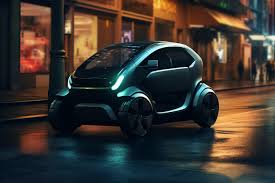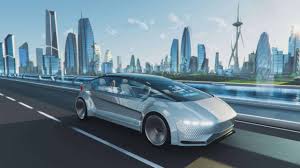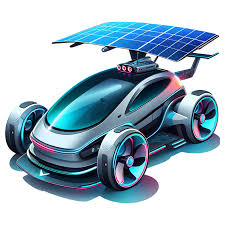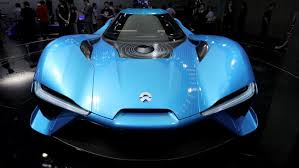
Now a days, there are lot of opportunity in automobile
sector . Automobile sector divide in 3 major corridor.
1- Electric vehicle
2- New vehicle
3- used vehicle
This sector lead India GDP.
It has play major role in JOB creation .
SOME FUTURE ELECTRIC VEHICLE IMAGE
Previous
Next
VEHICLE IN ALL SEGMENTS
Previous
Next
FUTURE OF ELECTRIC VEHICLES
The future of electric vehicles (EVs) is not just about technological advancements but also about how these innovations interact with and benefit humanity. The integration of EVs with human-centered design, ethical considerations, and social impact will shape how we experience transportation in the coming decades. Here’s a glimpse into the future of electric vehicles with a human touch:
1. User-Centric Design and Experience
- Personalization: EVs will be increasingly tailored to individual preferences, from interior design to driving modes. Advanced AI will learn and adapt to drivers’ habits, enhancing comfort and convenience.
- Human-Machine Interface (HMI): The interface between the driver and the vehicle will become more intuitive and responsive. Voice commands, gesture controls, and augmented reality displays will make interactions seamless and more natural.
2. Sustainable and Ethical Manufacturing
- Ethical Sourcing: The focus on sustainability will extend to the entire supply chain. Manufacturers will prioritize ethically sourced materials, such as cobalt-free batteries and recyclable components, ensuring that EV production minimizes environmental and social impacts.
- Circular Economy: EVs will be designed for longevity and recyclability, contributing to a circular economy where materials are reused and waste is minimized. This approach will reduce the overall environmental footprint and promote sustainability.
3. Social Impact and Accessibility
- Affordable EVs for All: As technology advances and production scales, EVs will become more affordable, making clean transportation accessible to a broader range of people, including those in developing regions.
- Inclusive Mobility Solutions: EVs will be part of a broader mobility ecosystem that includes shared and public transportation options, ensuring that everyone, regardless of physical ability or economic status, has access to clean and efficient transportation.
4. Enhanced Safety and Well-being
- Advanced Driver Assistance Systems (ADAS): Safety will be a top priority, with EVs equipped with sophisticated sensors and AI to prevent accidents, detect hazards, and assist drivers in real-time. Features like automatic emergency braking, lane-keeping assistance, and driver monitoring will save lives.
- Well-being Features: The interior environment of EVs will focus on passenger well-being, incorporating air purification systems, ergonomic seating, and ambient lighting that adapts to mood and time of day.
5. Community and Connectivity
- Vehicle-to-Grid (V2G) Technology: EVs will not just consume energy; they will become part of the energy ecosystem. With V2G, vehicles can store and return electricity to the grid, helping to stabilize energy supply and support renewable energy integration. This will empower communities to manage energy resources more effectively.
- Connected Communities: EVs will be part of smart cities, connected to each other and the urban infrastructure. This connectivity will enable real-time traffic management, reduce congestion, and enhance the overall efficiency of urban mobility.
6. Empowering a Green Lifestyle
- Education and Awareness: The transition to electric mobility will be accompanied by efforts to educate the public about sustainable living. EV manufacturers and governments will collaborate to raise awareness about the environmental benefits of EVs and promote responsible usage.
- Inspiring a Green Culture: The widespread adoption of EVs will inspire a broader cultural shift towards sustainability, influencing other areas of life, from renewable energy adoption to reducing plastic use. EVs will symbolize a commitment to a greener, healthier future.
7. Emotional Connection with Technology
- AI Companions: The integration of AI in EVs will go beyond functionality. Future EVs might include virtual assistants that offer not just navigation help but also companionship, understanding human emotions, and providing support during long drives or stressful situations.
- Design for Emotion: EV designs will evoke emotions and foster a sense of connection between the vehicle and the user. Automakers will focus on aesthetics, tactile experiences, and sound design to create vehicles that people feel attached to and proud to own.
8. Collaborative Innovation
- Co-creation with Communities: The development of EVs will increasingly involve collaboration with communities, allowing users to contribute ideas and feedback. This participatory approach will ensure that EVs meet the real needs and desires of people.
- Partnerships for Good: Automakers will partner with governments, NGOs, and other industries to create EV solutions that address societal challenges, such as reducing pollution in urban areas or providing mobility solutions in underserved regions.
Conclusion
The future of electric vehicles will be deeply intertwined with human values, needs, and aspirations. As technology continues to evolve, the emphasis will be on creating EVs that not only advance transportation but also enhance human well-being, promote sustainability, and contribute positively to society. This human touch will ensure that EVs are more than just machines—they will become integral parts of our lives, fostering a greener, more connected, and more compassionate world.


SOLAR PANEL SYSTEM FOR CHARGING

CHARGING PLUGS OF VEHICLE



FUTURE MANUFACTURING VEHICLE

PROJECT DONE
0
DONE
0